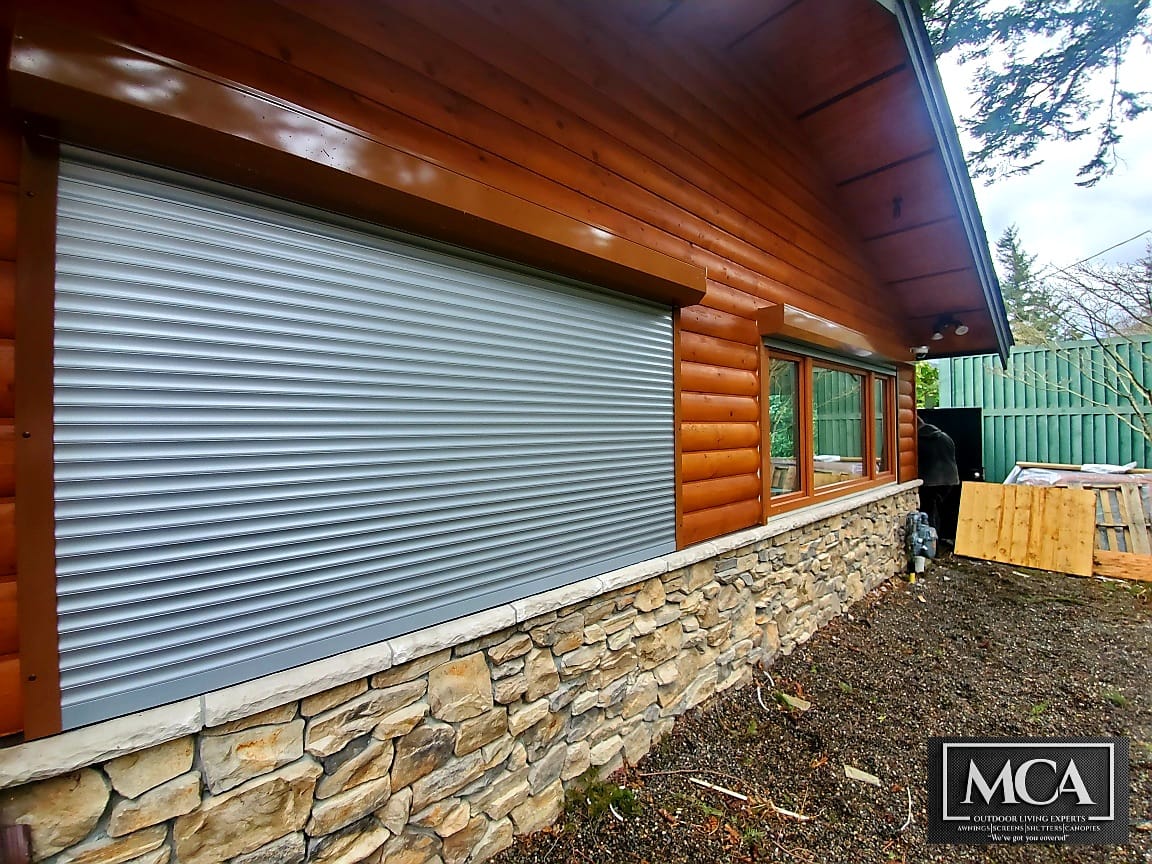Retractable Awning Care: Preparing for Winter
Winter is rough on outdoor structures. Mother nature has countless methods of attack: battering winds flinging debris everywhere, excessive moisture, heavy snow, and mould spores floating through the air in search of damp nooks and crannies can do a number on awnings. Pre-winter preparation for your retractable roof or retractable awning starts with cleaning. It’s necessary to prevent mould and debris from building up. To do it yourself, use a gentle soap like unscented dish detergent mixed with water. For distributing the soap, use a soft brush.
The frame and other support structures must also be cleaned, which includes removing dirt, spider webs, leaves, and other debris. The same goes for drainage channels and gutters, which have a habit of collecting debris that will eventually create clogs. If you start to clean your retractable roof or awning and discover any unexpected challenges, calling a professional for help is the way to go. They have commercial-grade cleaning products and tools for the trickiest tasks. Stubborn stains and mould colonies are especially good reasons to call a professional.
As part of winter awning care, it’s also important to think about protection against snow and freezing temperatures. Retractable awning winter preparation involves retracting and covering your awning when it’s not in use, ensuring that snow and ice don’t collect on the fabric or frame. A properly stored or covered awning will last much longer through cold, wet months. If your awning is motorized, make sure the motor is also protected from moisture and low temperatures.
Seasonal Awning Maintenance
Cleaning is just the beginning of retractable roof care. Inspect awning fabric for signs of degradation like tears, weak spots, and fraying. You also need to check the frame for damage such as rust, loose bolts or screws, and dented or bent components. Test how the awning operates. Though you might use your awning a lot, changes in its operation can happen slowly, making them hard to notice unless you pay attention. Look for any unusual or concerning sounds, hitches while extending and retracting, and any other oddities that weren’t present when your awning was installed. Mounting points, seals, and weatherstripping require inspection, too.
Once you’ve thoroughly investigated potential problems, it’s time to perform actual maintenance. Apply lubricant to components that move. Tighten screws and other hardware if necessary, though not so much that unscrewing them would be an arduous, potentially damaging task. Call a professional if you discover structural, electrical, or mechanical issues. If you attempt to fix a problem yourself, but it remains, that’s another clear sign that a professional is called for. Pressing on without expert involvement may damage your awning or roof, voiding your warranty.
Before winter arrives, retractable awning winter maintenance should also include a full inspection of moving parts and support structures. Cold weather awning maintenance helps prevent damage from ice expansion, freezing rain, and condensation buildup. A quick check before the season sets in can save you from costly repairs come spring.
Winter Awning & Retractable Roof Care Tips
Regular maintenance reduces wear and tear, but it can be tedious. Fortunately, there are some best practices to reduce the need for maintenance as well. Always retract your awning or roof during heavy rain, which can cause water to pool. Heavy winter winds are another sign that it’s time to retract your awning, which is effortless if you have a motorized retractable awning that retracts automatically in excessively windy conditions. You can also purchase a cover to protect your awning when not in use.
As for minimal-effort winter maintenance, make sure to check your awning after each storm. Remove snow and debris immediately to prevent mould growth and other damage. You spent good money on that awning, so protect your investment through smart seasonal awning care.
During particularly cold months, take time to inspect your awning after snow or ice accumulation. Protecting retractable roofs and retractable awnings in winter is all about prevention—keeping fabric dry, mechanisms clean, and ensuring no excess weight builds up from snow. Following these retractable awning winter tips will help extend the lifespan of your awning and keep it looking its best.
















